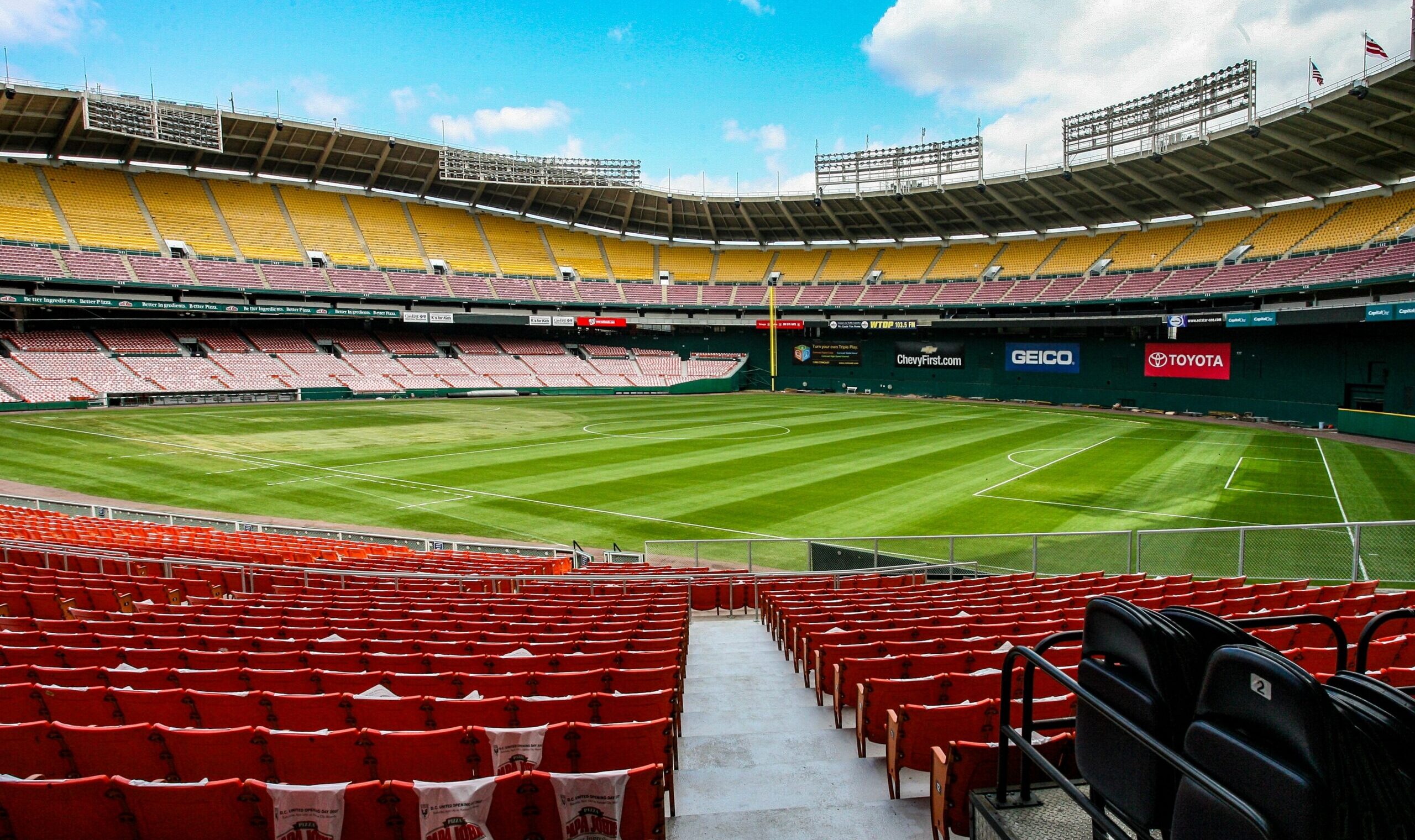Fight for Old D.C.
Washington’s football team may have lost its name, but it has regained its city.

Let it never be said again that Washington, DC is a city without any native culture. The fact that its professional football team, against all odds, is at last returning to the site of RFK Memorial Stadium puts that myth to rest. The Commanders may have shed their true name, but they have regained their old city.
That the team is returning from the suburbs at all is incredible. The trend runs almost exclusively in the other direction. Right now, the Chicago Bears are in the act of desecrating Soldier Field, the oldest and most venerable stadium in the NFL, by moving out to Arlington Heights. The Cleveland Browns are eyeing a similar move, which would take the team away from its downtown perch directly on Lake Erie to some drab Ohio tract. So too are the Denver Broncos, who may soon move from their unlovely downtown spot to an equally godless outpost in the Rockies. The only team I can think of in the last 25 years that ran in the opposite direction is the Detroit Lions, whose fans are just as loyal and beleaguered as Washington’s.
The Lions came back to downtown Detroit because the ailing city gave the team significant financial incentives to fill the blighted and otherwise undesirable land. This is not the case in the Commanders deal, which was announced on Monday at a joint press conference between Mayor Muriel Bowser and the team’s owner, Josh Harris. Under the deal’s terms, which still require approval from the DC City Council, the Commanders will chip in $2.7 billion to redevelop the RFK site, and the city will supply the remaining $1 billion. The team will cover any cost overruns. The stadium is set to open in 2030, and both Bowser and Harris say they are invested in developing the land surrounding it as well.
A billion dollars sounds like a lot of money to taxpayers, and of course it is. But on the whole the city brokered a favorable deal, so far as these things go. Harris is paying for more than 75 percent of the costs to build the new stadium. By contrast, in the proposed stadium deals in Cleveland and Chicago, the teams’ owners are at best willing to put up 50 percent.
The really impressive thing though is that there is a deal. Bowser has been trying to woo the team back to the city for years. Harris’s predecessor, Dan Snyder, also wanted to move to RFK, but he was a terrible negotiator; he never understood how to handle Congress and the mayor’s office. Still, the end of his inglorious reign may have made the deal, which seemed like a far-fetched fantasy at the time, a real possibility. Snyder changed the Redskins name (twice!), which was a sticking point for officials in the city. He also made a last-ditch effort to move the Commanders from Maryland to Virginia, a signal that the team was truly exhausted by FedEx Field.
At the time of the second name change, Bowser commented that if the team wanted to “return to winning,” it should return to its hometown. Evidently Harris, who grew up in Chevy Chase, Maryland, in the glory days of Joe Gibbs, agreed. After a successful season last year, only stopped short of the Super Bowl by a loss in the NFC championship, Harris began getting serious about bringing the team back to what he calls its “spiritual home.” And now the dream looks more like reality daily.
There is still an old Redskins sign that hangs over the I-295 exit for RFK. It is barely visible beneath another metal plate advertising D.C. United, a soccer team that also no longer plays in the stadium—but still, it is there. A few years ago, the managing editor of this publication and I hatched a plan to steal it. We never followed through. (These days we are too law-abiding even for high school pranks.) And I am glad of it. For decades that sign was a grim reminder that Washington’s team had abandoned its home, and at length, its name. Now its meaning is different. The team is coming back, and though its name has changed—and indeed football itself has changed since 1996—its history has not. I hope that old sign hangs there forever, a reminder of what the present owes to the past.
The post Fight for Old D.C. appeared first on The American Conservative.

